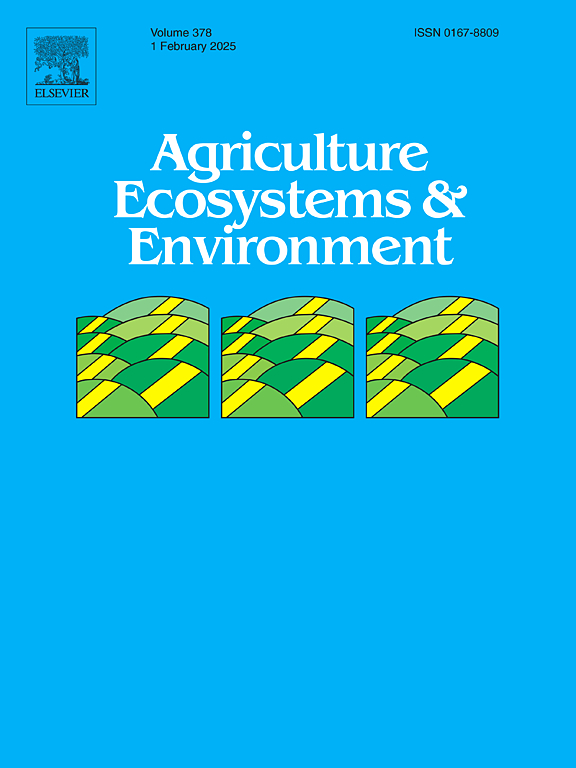Shrubs increase phosphorus transformation from inorganic to organic form via lowering soil pH in grazed alpine meadows
IF 6
1区 农林科学
Q1 AGRICULTURE, MULTIDISCIPLINARY
引用次数: 0
Abstract
Shrubs are expanding in grassland ecosystems across the world, yet their influence on the spatial heterogeneity of soil phosphorus (P) transformation has seldom been investigated. We conducted grid sampling to a soil depth of 1.2 m in a grazed alpine meadow dominated by grass patches and four shrub species to analyze the spatial distributions of soil pH and total soil P and its acid-soluble (representing inorganic P) and acid-insoluble (organic) P fractions. Heterogeneities of soil pH and total, acid-soluble and acid-insoluble P were all visible to the depth of 1.2 m across the plot. The total P stock decreased in the upper 0.4 m of soil, but increased in the lower 0.8 m, under shrubs compared to grasses, resulting in only negligible differences in the total soil P stock in the entire 1.2 m profile between vegetation patch types. The acid-soluble P stock decreased under shrubs throughout the profile, responding to the lowering of soil pH by shrubs, while the acid-insoluble P stock increased in the lower 0.8 m, under shrubs compared with grasses. Soil acid-insoluble P under shrubs increased at the expense of acid-soluble P. These features led to significantly higher proportions of acid-insoluble P in the total P across the 1.2 m soil profile under shrubs (66–71 %) compared to grasses (55 %), associated with the lowered soil pH in shrubby patches. We conclude that shrubification alters the biochemistry of the soil P pool to a depth of at least 1.2 m. The lowered soil pH under shrubs drives the transformation of soil P from inorganic to organic forms in alpine meadows. The altered biochemistry of the soil P pool suggests a rapid release of available P, which supports primary productivity. We emphasize the importance of deep soil sampling in investigating the effects of shrubification on soil P cycling.
求助全文
约1分钟内获得全文
求助全文
来源期刊

Agriculture, Ecosystems & Environment
环境科学-环境科学
CiteScore
11.70
自引率
9.10%
发文量
392
审稿时长
26 days
期刊介绍:
Agriculture, Ecosystems and Environment publishes scientific articles dealing with the interface between agroecosystems and the natural environment, specifically how agriculture influences the environment and how changes in that environment impact agroecosystems. Preference is given to papers from experimental and observational research at the field, system or landscape level, from studies that enhance our understanding of processes using data-based biophysical modelling, and papers that bridge scientific disciplines and integrate knowledge. All papers should be placed in an international or wide comparative context.
 求助内容:
求助内容: 应助结果提醒方式:
应助结果提醒方式:


